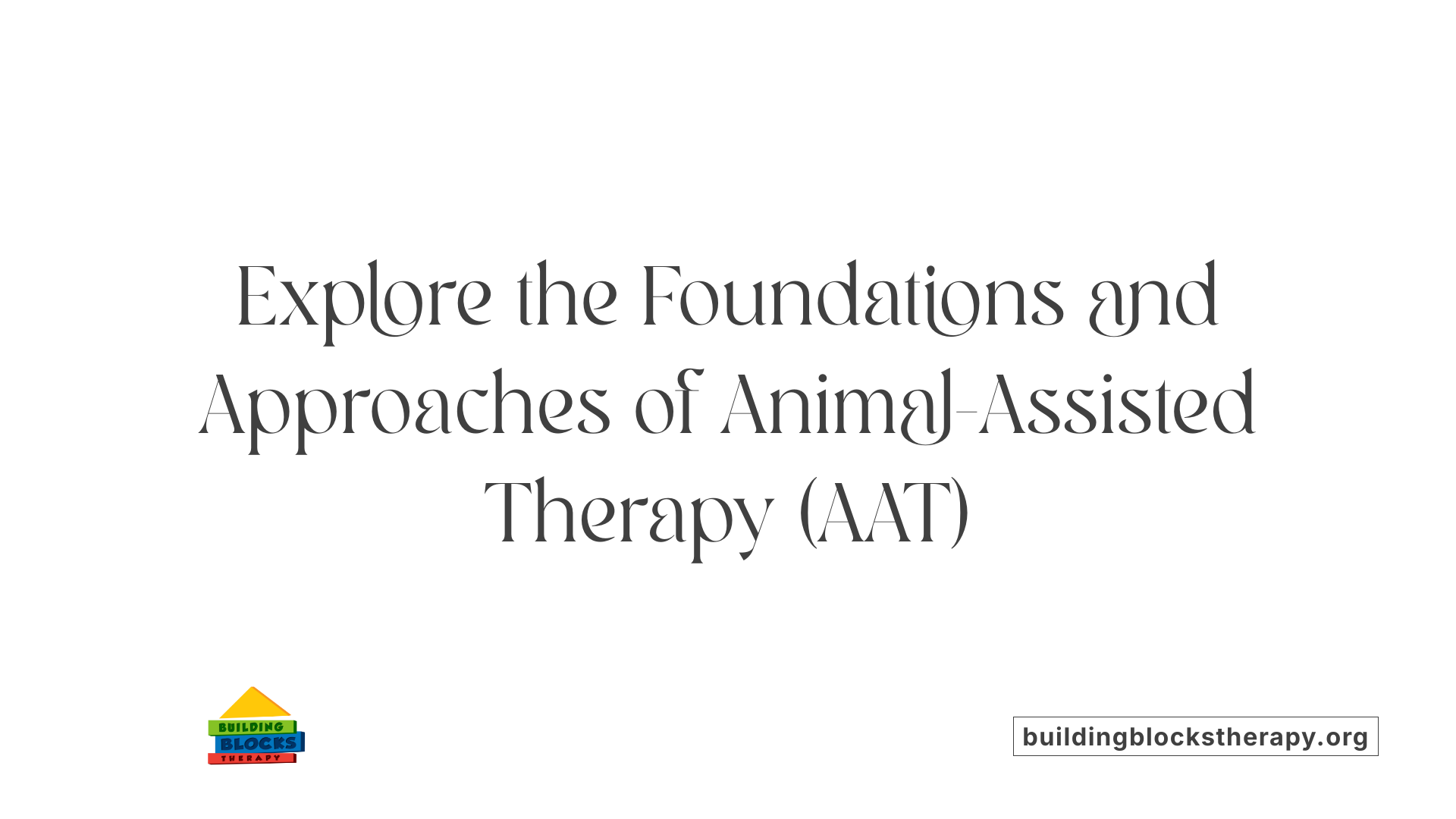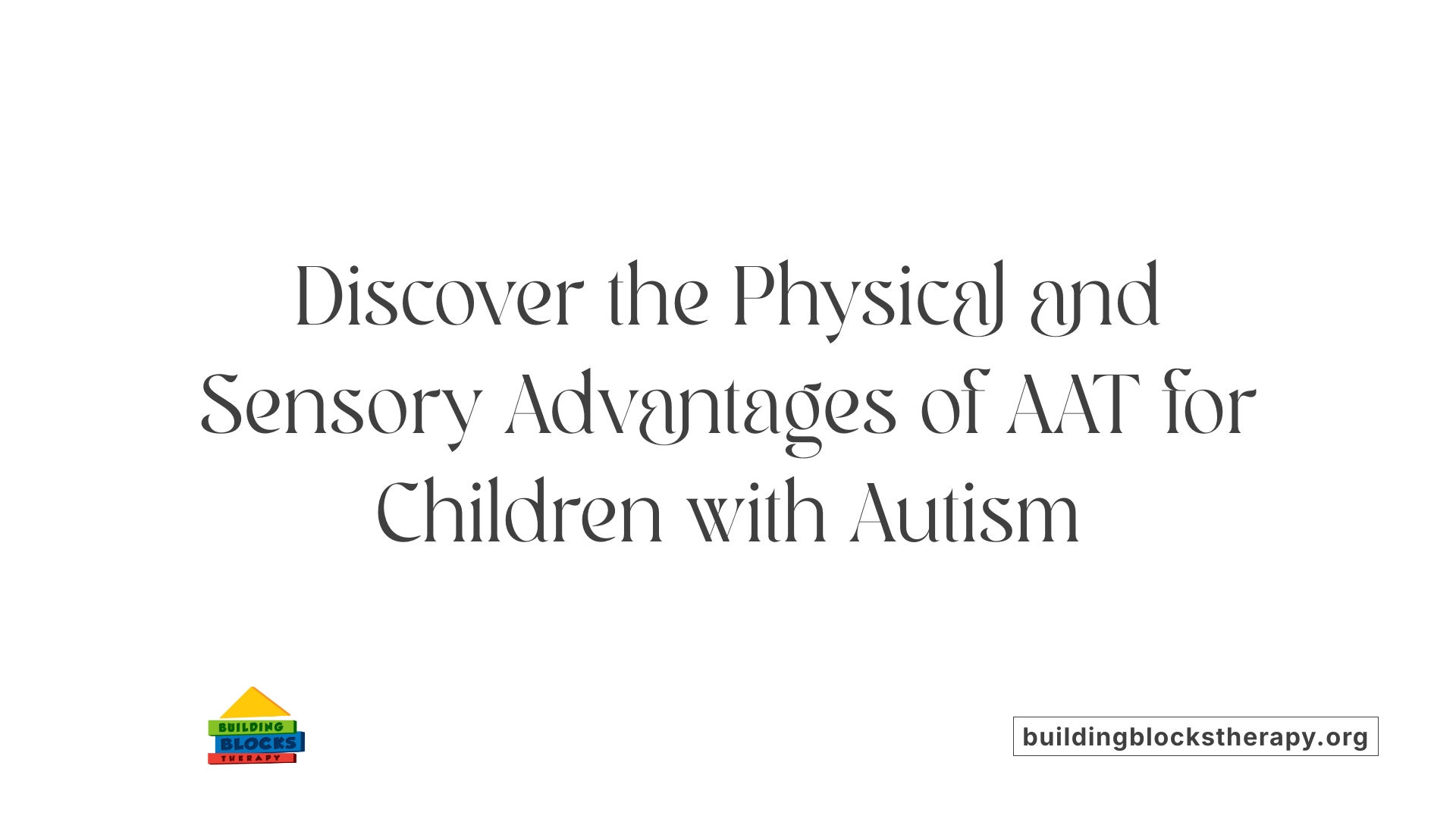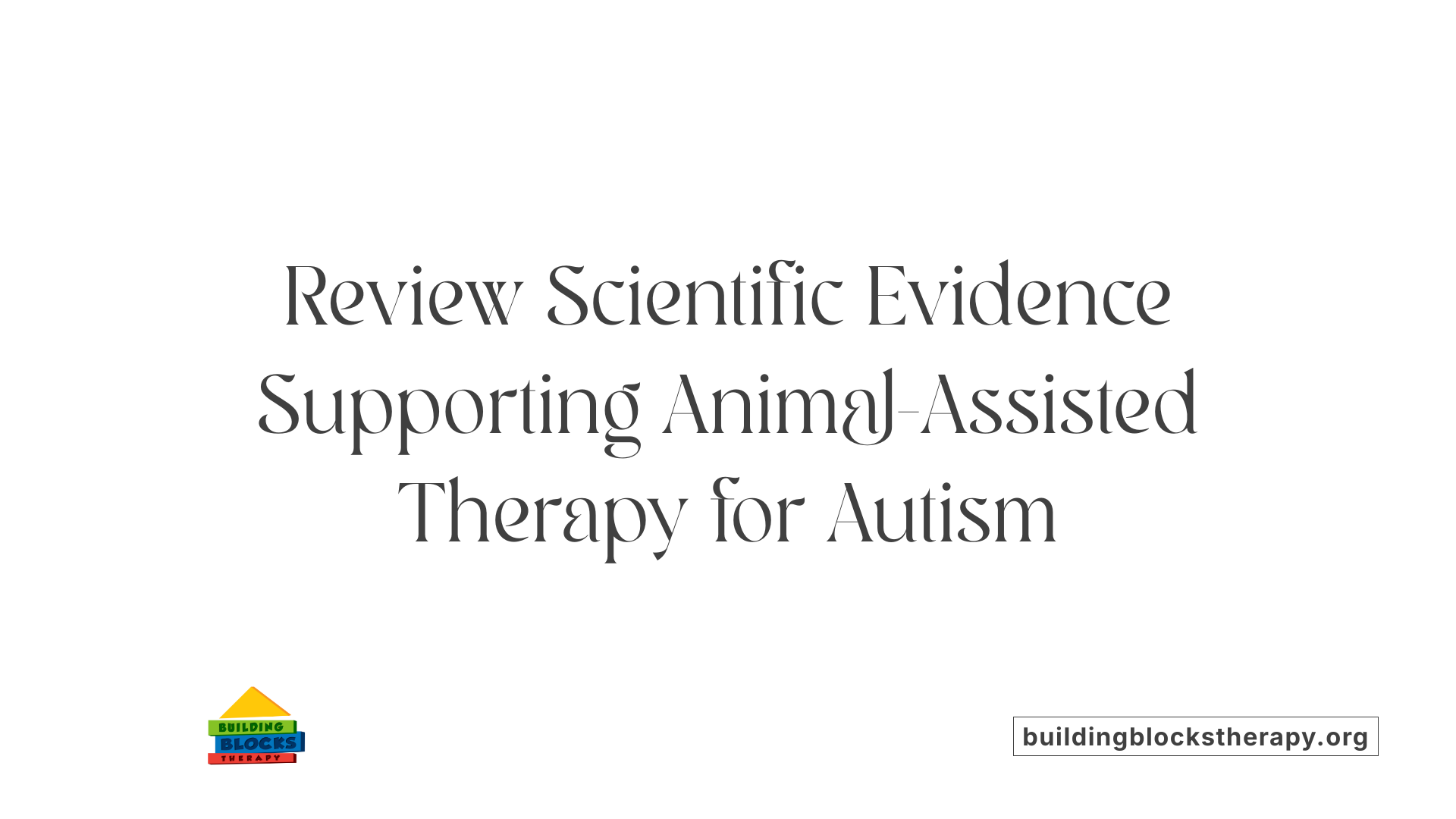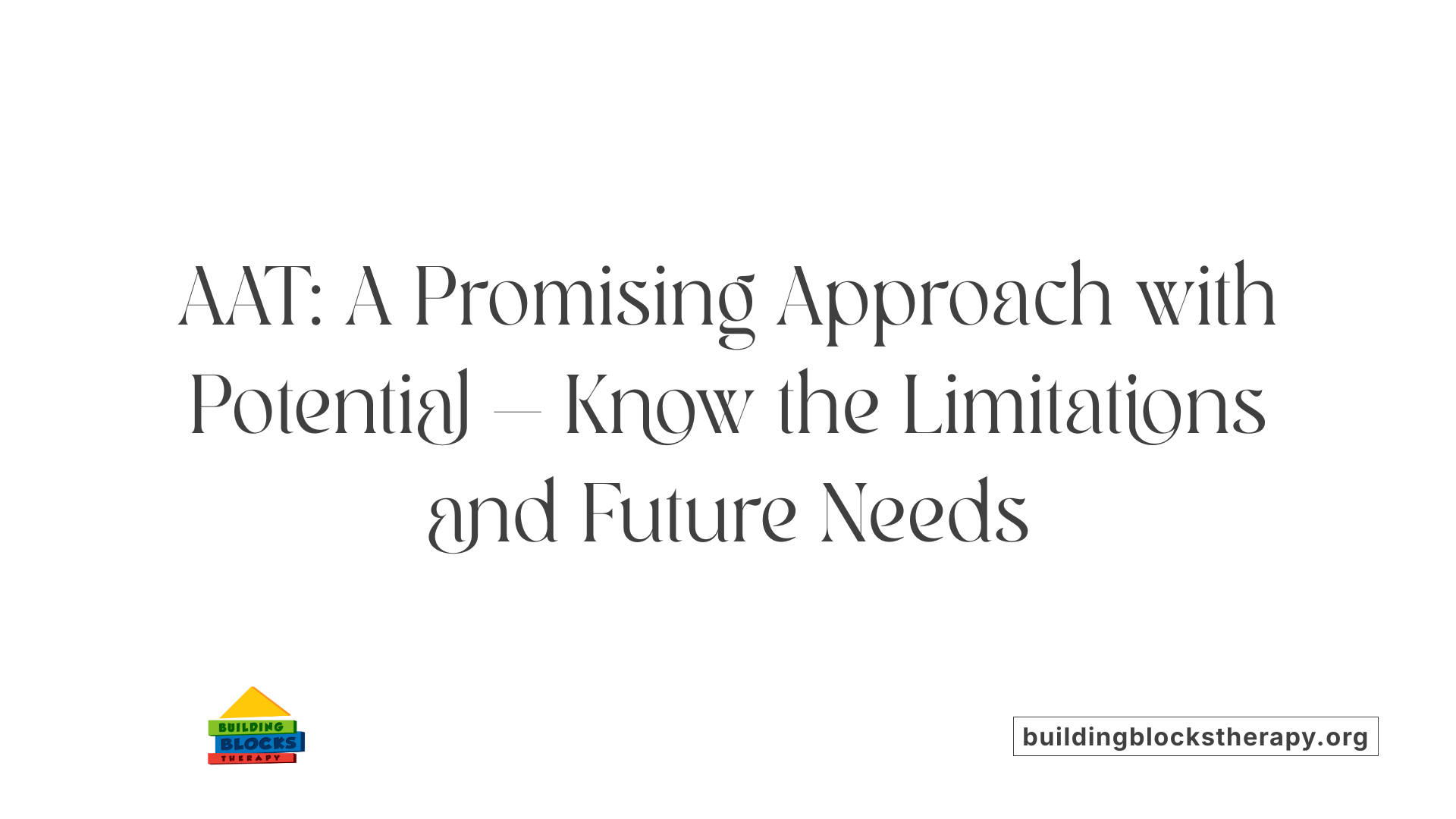Exploring the Many Benefits of Animal-Assisted Therapy for Autism
Animal-assisted therapy (AAT) has emerged as a promising complementary approach for supporting children and adolescents with autism spectrum disorder (ASD). Utilizing animals such as dogs, horses, and small mammals, AAT provides a unique, multisensory environment that promotes emotional, social, and physical development. This article delves into the scientific evidence, benefits, considerations, and misconceptions related to animal-assisted therapy for autism, illustrating how these natural companions can foster trust, reduce anxiety, and enhance quality of life for individuals on the spectrum.
Understanding Animal-Assisted Therapy (AAT) and Its Foundations

What is Animal-Assisted Therapy (AAT)?
Animal-assisted therapy (AAT) is a form of psychotherapy that incorporates animals into the treatment process. The presence of animals can foster trust, feelings of safety, and emotional openness in clients. Typically facilitated by trained professionals such as psychologists, speech therapists, and occupational therapists, AAT involves sessions with animals like dogs, horses, or small pets such as guinea pigs and cats. These interactions are tailored to meet individual needs and aim to promote various emotional, social, and physical benefits.
Historical background of AAT
The concept of using animals in therapeutic contexts is rooted in a long historical tradition. Formal research into AAT began in 1961 when child psychologist Dr. Boris Levinson explored the potential of animals to help children develop social and communication skills. Since then, interest in AAT has increased significantly, with research output continuously rising, especially after 2015. Today, various organizations, such as PATH International, set standards for therapeutic riding and animal-assisted activities, emphasizing safety and effectiveness.
Models and approaches in AAT
AAT employs different frameworks to suit individual client requirements. These include models like the triangle, diamond, and star configurations, which outline how the therapist, client, and animal interact during sessions. The therapy can be conducted at home, in clinics, or in educational settings such as schools.
AAT is often conducted over 6-12 sessions, focusing on enhancing social interaction, emotional regulation, and sensory processing. It is supported by a growing body of evidence suggesting benefits like reduced stress, improved social skills, and better emotional expression in autistic children.
| Model Name | Description | Typical Use Case |
|---|---|---|
| Triangle | Involves the therapist, client, and animal forming a triangular relationship to facilitate interaction | Social skills and trust building |
| Diamond | Adds a family or caregiver component to the therapy, emphasizing support systems | Family involvement and generalization |
| Star | Focuses on multiple animals and activities to target various skills | Sensory integration and diversification |
Although promising, current research evidence varies in quality. Small sample sizes and methodological limitations urge caution, as the scientific community calls for more rigorous studies to confirm the therapeutic potential of AAT. Overall, AAT remains a promising complementary approach that can foster emotional, social, and physical development in children with autism, provided it is applied with careful planning and professional oversight.
Physical and Sensory Benefits of AAT for Autism

What are the benefits of animal-assisted therapy for children with autism?
Animal-assisted therapy (AAT) provides several meaningful physical and sensory advantages for children on the autism spectrum. One of the main physical benefits is offering a sense of companionship, safety, and purpose. Children often find comfort and reassurance in the presence of animals, which can help them feel more secure during therapy sessions. This sense of connection can reduce feelings of anxiety and foster emotional openness.
Beyond companionship, AAT delivers multisensory stimulation that supports sensory regulation. Animals such as dogs, cats, and small pets like guinea pigs engage multiple senses through touch, sight, and sound. This multisensory engagement can help children better process sensory information, reducing overload and supporting self-regulation.
An important aspect of AAT is its role in minimizing problematic behaviors such as meltdowns and hyperactivity. The calming influence of interacting with animals—like petting or cuddling—can lower stress levels and promote relaxation. For example, stroking a dog can release oxytocin, a hormone linked to emotional calming, which helps children stay composed even in challenging situations.
In addition, these therapies can improve physical coordination and balance, especially in interventions involving horses or therapeutic riding. Such activities not only provide sensory input but also encourage motor skills development, which contributes to overall physical well-being.
By integrating sensory and physical benefits, animal-assisted therapy creates a nurturing environment that supports emotional stability, enhances sensory processing, and promotes a calmer, more focused state for children with autism.
Emotional and Social Impact of Animal Interaction

What are the benefits of animal-assisted therapy for children with autism?
Animal-assisted therapy (AAT) has gained recognition as a supportive approach for children with autism spectrum disorder (ASD). It offers several notable advantages that promote emotional well-being and social development.
One of the core benefits is the improvement in communication and social skills. Interactions with animals, particularly dogs, cats, and small pets like guinea pigs and rats, foster a sense of comfort and trust. This emotional connection helps children become more open and willing to engage during therapy sessions.
AAT also contributes to emotional regulation by providing a calming presence. For example, petting an animal can trigger the release of oxytocin, a hormone that promotes relaxation and bonding. This can reduce stress, anxiety, and sensory overload, which are common challenges for children with autism.
Moreover, children often develop greater self-confidence and acceptance through their relationships with animals. Feeling unconditionally accepted by a pet can help boost self-esteem and foster a positive self-image. These interactions teach children that they can form meaningful bonds, enhancing their social participation.
Building responsibility and empathy is another significant aspect of AAT. Caring for animals encourages routines and teaches children to consider the needs and feelings of others. These lessons translate into better social understanding and emotional maturity.
Finally, participation in animal-assisted activities like dog visits or horseback riding can improve behavioral control. For example, trained dogs can assist during meltdowns by applying weighted pressure or using their body to promote calming. Likewise, therapeutic horseback riding has shown promising results in improving speech, social skills, and emotional stability.
Despite these benefits, it is important to tailor therapy plans carefully. Conducting proper assessments and planning can prevent potential triggers, such as sensory overload or agitation linked to animal stimuli. Overall, AAT holds promise as a complementary tool to support emotional and social development in children with autism, helping them connect more deeply within their environments.
Scientific Evidence and Research Summaries on AAT for Autism

What scientific evidence supports the use of animal-assisted therapy for autism?
Research into animal-assisted therapy (AAT) for autism has increased significantly over recent years, with promising results indicating benefits across several developmental areas. Systematic reviews and meta-analyses of multiple studies have shown that AAT can improve social engagement, reduce irritability, and enhance sensory processing among children and adolescents with autism spectrum disorder (ASD).
For instance, a comprehensive review of 45 studies involving over 1,200 participants revealed statistically significant improvements in social communication skills, hyperactivity, and emotional regulation following participation in animal-assisted programs. Meta-analyses point to positive shifts in behaviors such as increased social responsiveness and decreased problem behaviors like hyperactivity and irritability.
Common interventions include therapy with dogs, horses, guinea pigs, and other pets, which help foster emotional security, social interaction, and sensory stimulation. Many children show increased confidence and better communication skills, supported by reports of calmer demeanor and reduced anxiety during animal interactions.
However, despite these encouraging findings, much of the existing research suffers from certain limitations that temper the strength of the evidence. Studies often involve small sample sizes, lack control groups, and use varied protocols and measurement tools. As a result, while anecdotal reports and preliminary scientific studies suggest that AAT can be a beneficial adjunct therapy, the numerical evidence remains provisional.
More rigorous, large-scale, randomized controlled trials are necessary to definitively establish the efficacy of animal-assisted therapy in treating core autism symptoms. Standardization of treatment procedures and long-term follow-up data will also be crucial in confirming the sustained benefits of AAT.
In summary, current scientific data support a potential role for animal-assisted therapy in improving social, sensory, and emotional functions in individuals with autism. Still, the field must address existing research gaps to move from promising early findings to robust, evidence-based practices.
Further research into the scientific validation of animal-assisted therapy in autism can be explored by searching for "Scientific validation of animal-assisted therapy in autism research."
Implementation, Costs, and Ethical Considerations
Animal-assisted therapy (AAT) sessions for individuals with autism are typically structured as part of a comprehensive treatment plan, often involving 6 to 12 sessions conducted by trained professionals. These sessions can take place in various settings, including clinics, schools, or at home, depending on the individual's needs.
Each session usually lasts around 30 to 60 minutes, allowing for meaningful interaction without overwhelming the participant. The structure of the session is tailored to the client's specific goals, whether that involves improving social skills, emotional regulation, or sensory processing.
Regarding costs, prices generally range from $145 to $165 per session. Insurance plans, such as the National Disability Insurance Scheme (NDIS) in some countries, may cover these expenses if AAT is included in the care plan, making therapy more accessible for many families.
Ensuring the quality and safety of AAT involves adherence to standards set by organizations like PATH Intl., which accredits centers providing therapeutic riding and animal-assisted interventions. Certified professionals, including psychologists, speech therapists, and occupational therapists, oversee the programs, ensuring therapies are both effective and ethical.
However, AAT is not without risks. Some animals may inadvertently trigger autistic traits such as meltdowns, agitation, or sensory sensitivities. To minimize these risks, thorough assessments before initiating therapy are essential. This includes evaluating the child's response to animals, the animal's temperament, and careful planning of sessions to accommodate sensory and emotional sensitivities.
Certain breeds or types of animals are better suited for autism assistance due to their calm, predictable, and trainable nature. Popular choices include Golden Retrievers, Labrador Retrievers, Standard Poodles, and German Shepherds. Hypoallergenic options like Goldendoodles and Poodles are often preferred for individuals with allergies. Proper training from accredited organizations ensures these animals reliably perform specific tasks, such as applying deep pressure to soothe or alerting caregivers to signs of distress.
Despite the positive potential of animal-assisted interventions, limitations exist. Animals might sometimes provoke overstimulation or meltdowns, especially if not properly introduced or if the child is highly sensitive. Therefore, close supervision, ongoing assessment, and individualized planning are crucial to ensure safety and maximize benefits.
In summary, while AAT offers promising support for children with autism, it requires careful implementation, trained professionals, and ongoing risk management to provide safe and effective therapy.
Conclusion: A Promising Complementary Approach but With Caution and Need for Further Research
 Animal-assisted therapy (AAT) offers a range of benefits for children with autism, from physical and sensory stimulation to emotional growth and social engagement. Studies and clinical reports highlight that many participants experience reductions in stress, hyperactivity, and irritability, as well as improvements in language, self-confidence, and social skills. This potential is supported by a growing body of research, including systematic reviews and meta-analyses, which show positive trends in multiple developmental areas.
Animal-assisted therapy (AAT) offers a range of benefits for children with autism, from physical and sensory stimulation to emotional growth and social engagement. Studies and clinical reports highlight that many participants experience reductions in stress, hyperactivity, and irritability, as well as improvements in language, self-confidence, and social skills. This potential is supported by a growing body of research, including systematic reviews and meta-analyses, which show positive trends in multiple developmental areas.
Despite these promising findings, current scientific evidence is limited by methodological challenges. Many studies feature small sample sizes, lack control groups, or exhibit variability in intervention protocols, making it difficult to draw definitive conclusions about efficacy. Furthermore, AAT is not a one-size-fits-all solution; individual differences among children mean that some may benefit more than others. It's important to recognize that not every child with autism will respond to AAT in the same way, emphasizing the need for personalized planning and professional guidance.
When considering implementing AAT, families and practitioners should be aware of potential limitations. For example, animals can sometimes trigger agitation or meltdowns in children on the spectrum. Therefore, thorough pre-assessment and carefully designed session plans are essential. The selection of appropriate animals—whether dogs, cats, horses, or smaller pets like guinea pigs—is also crucial, as compatibility and temperament can influence outcomes.
Looking ahead, more rigorous research is needed to better understand the long-term benefits, optimal protocols, and mechanisms underlying animal-assisted interventions in autism. Future studies should aim for larger sample sizes, standardized measures, and longer follow-up periods to establish more conclusive evidence. Such efforts will help refine best practices and expand accessible, effective options for supporting children with autism.
In summary, AAT holds considerable promise as a complementary approach to traditional therapies. It can foster emotional wellbeing, social skills, and sensory regulation, contributing positively to the lives of many autistic children. However, careful planning, ongoing evaluation, and further scientific investigation are necessary to ensure safe, effective, and personalized use of these interventions.
Final Thoughts: Nurturing Growth Through Compassionate Animal Connections
Animal-assisted therapy holds great promise as a supplementary tool to support children and adolescents with autism. Its physical, sensory, emotional, and social benefits, supported by emerging scientific research, demonstrate animals’ capacity to foster trust, reduce anxiety, and promote developmental gains. Nonetheless, researchers emphasize the necessity for more rigorous studies to clarify long-term effects and establish standardized protocols. Families and practitioners are encouraged to carefully assess individual needs, choose appropriate animals, and ensure ethical, well-trained animal involvement. As the field continues to evolve, animal-assisted therapy can serve as a compassionate bridge to improved well-being and fuller integration into social life for those on the autism spectrum.
References
- An Evaluation of Animal-Assisted Therapy for Autism Spectrum ...
- What Do We Really Know about Animal Interventions for Autism?
- Benefits of pets for autistic children - Foster Care Associates
- Animal-assisted therapy: autistic children | Raising Children Network
- Effectiveness of animal-assisted activities and therapies for autism ...
- The effectiveness of animal-assisted therapy for children and ...
- Exploring the Benefits of Animal-Assisted Interventions for Autism ...






